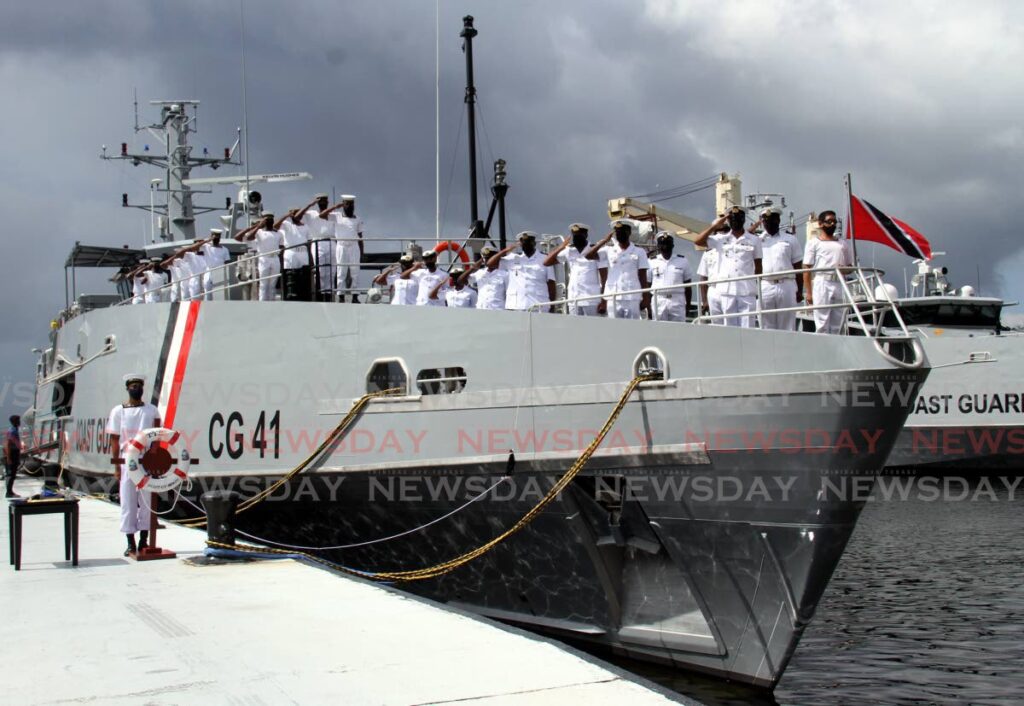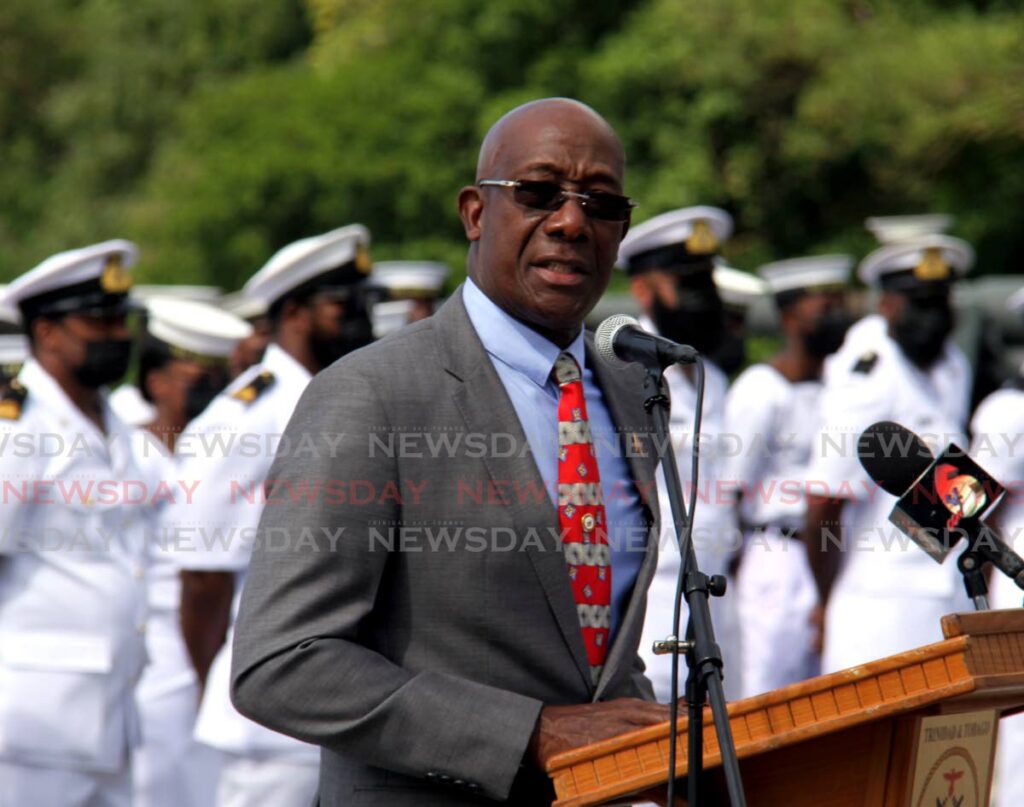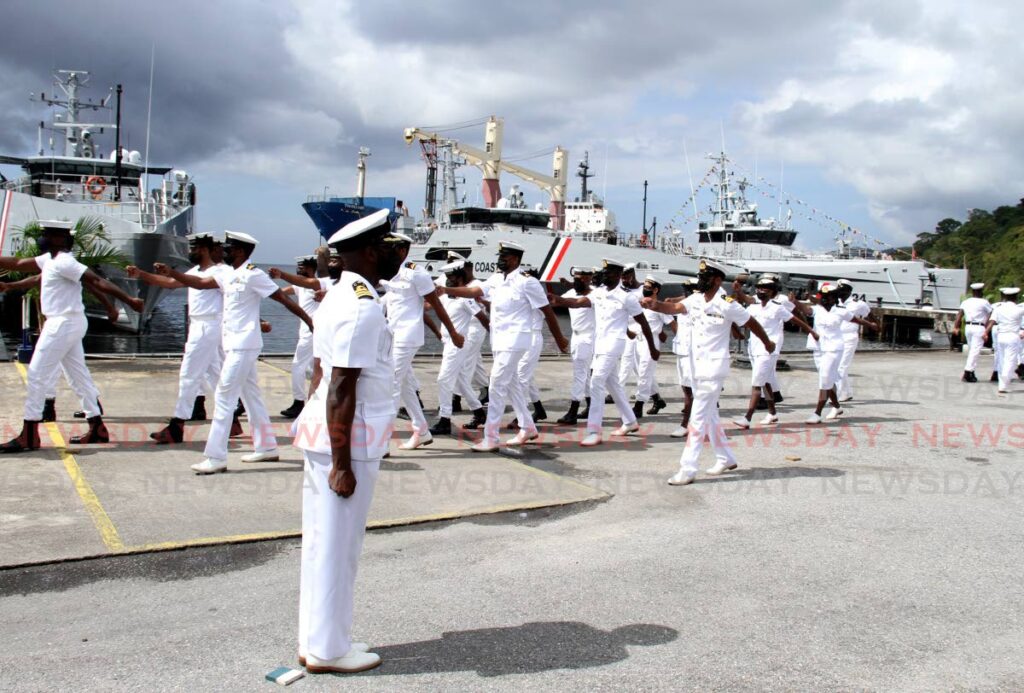New Coast Guard vessels begin maiden missions to protect Trinidad and Tobago

The Prime Minister said the two newly commissioned Coast Guard vessels are major assets which will enable the organisation to have a presence in the Atlantic Ocean.
The TTS Port of Spain (CG41) and TTS Scarborough (CG42) were commissioned on Sunday and began their maiden missions.
Dr Rowley was delivering the feature address at the commissioning at the Coast Guard Headquarters, Staubles Bay, Chaguaramas on Sunday. He said the people of Tobago, especially eastern Tobago, could now rest easier.
He said Trinidad and Tobago occupies 5,000 square kilometres, and those in uniform on these vessels are required to secure and patrol 250,000 square kilometres.

“Our men and women on these vessels are in charge of protecting the waters and protecting us from people who would harm us whether they are gun runners, human traffickers, or contraband specialists. They will stand between us and all comers, the large and small craft, with good intent and otherwise protecting our fisheries, and protecting our borders in their totality.”
Rowley said the vessels were tested in areas of the Australian coast which had similar conditions to those in TT, and the design, hull type, and utilisation had been proven to be exactly what was required.
The TTS Port of Spain (CG41) and TTS Scarborough (CG42) were commissioned on Sunday and began their maiden missions. pic.twitter.com/QJGZjEsX5G
— T&T Newsday (@Newsday_TT) November 29, 2021
“We expect nothing but good news with respect to the utilisation of these vessels. We are stretched for resources, but we have prioritised the expenditure on these resources. Keep the complaints to yourselves, and make them work. Attitude substitutes a long way to make up for the absence of resources, the phrase some people use to explain their lack of initiative and unwillingness to do hard work.”
He urged the senior officers in the Coast Guard to ensure that the vessels remained fit for purpose, “and the people you train and put on board are worthy of the uniform and the command you’ve placed on them. You have the full support of the government to discourage the presence of any officer within the ranks who is unfit to be there.”
Rowley called on those manning the vessels, as well as the rest of the Coast Guard, to continue being TT’s first line of defence.
“Our fishermen are saying that our resources are being extracted by people who are doing so without authority. You would have seen the horrendous stories of people being trafficked from South America and even within our own territories, and the amount of firearms on our streets and the effect that is having on our safety and security.
“These are large craft, but you carry on board smaller craft that can chase down and enter the littoral zone. Make use of these facilities. You have good technology to determine who is around you, to strategise, out-think and outrun those who are bent on criminal activity. Do that.”
National Security Minister Fitzgerald Hinds said having the vessels in service eased his mind as they were a substantial part of the government’s border control and security.

“The vessels are able to remain much longer on the job than other capabilities we had, and able to go to places we did not frequent or go at all.
“Border control and security is a high priority for the government, and the highest priority for the National Security Ministry. The vessels will be deployed around both Trinidad and Tobago, and the two vessels stationed at Tobago will also remain there. I’m sure the deterrent effect will be great.”
He commended lieutenant commander Francise Paulette Cazoe for her role in ensuring that the vessels were fit for purpose.
Attorney General Faris Al-Rawi said the vessels, which arrived in June 2021, were only now being commissioned as the crews assigned to them had had to be trained and signed off as fit and competent to operate them.
The vessels were christened by patrons La Toya Tracey, wife of senior sea going ship captain and TTS Port of Spain captain, lieutenant commander Torinio Tracey, and patron Shelliane Archer, wife of former commanding officer of the Coast Guard Captain Douglas Archer, now the substantive commanding officer of the TT Defence Force Reserves.
The two Cape Class patrol boats are equipped with a 3,000 nautical mile range at an economic speed of 12 knots and are capable of patrols up to 28 days, with a crew of up to 27 people.
Their top speed is rated over 20 knots and are also outfitted with two high-speed 7.3-metre rigid hull inflatable boats which can be used for a variety of missions.
The vessels, which cost US$38.6 million each, were built by shipbuilding company Austal Australia, which was awarded a US$126 million contract by the government in August 2019, with financial support provided by the Australian government’s Defence Export Facility, arranged by Export Finance Australia.


Comments
"New Coast Guard vessels begin maiden missions to protect Trinidad and Tobago"